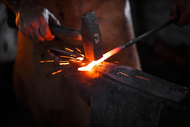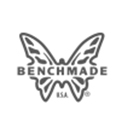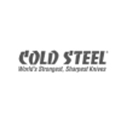The Best Quality Pocket Knife, by Steel Chemistry and Property
6th Oct 2025
Assuming you understand steel chemistry as well as the desired properties of knife steel, you can more or less forget about the brand of the best quality pocket knife. All you need to know is in the details. That’s precisely what this short post will break down.
Steel Chemistry
Steel chemistry is the main driver of the properties of the resulting alloy, the other major component being heat treatment, which determines how the alloy will behave once it has been forged. The following are the most common elements included in steel alloys.
- Iron: Iron makes up the majority of steel by mass and volume, but since it is the common denominator, it’s the additional inclusions, below, that make up the main differences between one steel or the other.
- Carbon: Carbon is the most important alloying element in steel, including chiefly to make the steel harder and stronger. Carbon alloys steel to form a crystal matrix when properly heat treated, and carbon also forms with certain other alloying elements like vanadium to form carbides, extremely hard elements that improve hardness and edge retention. The more carbon, the harder a steel can be made, but the more brittle it will become. As a result, most knife steel alloys contain between .5% and 1.5% carbon. Lower carbon alloys tend to be a little bit tougher, but higher carbon alloys tend to be a little bit harder.
- Chromium: Chromium is chiefly added to steel to improve its corrosion resistance, as chromium will form a thin layer of chromium oxide at the surface, protecting the iron underneath from corroding. It is usually included in knife steel alloys in concentrations from 10% to about 18%, though some alloys are much lower. While chromium significantly improves corrosion resistance, it also results in a softer steel.
- Vanadium: Vanadium interacts with carbon to form vanadium carbides, which are extremely hard and which therefore improve the wear resistance of a steel. As a result, vanadium-rich steels often hold an edge for longer. However, vanadium also improves the strength and wear resistance of steel.
- Molybdenum: Molybdenum is a very dense element, denser than both vanadium and steel; it is chiefly added to steel to improve its wear resistance and general toughness. Molybdenum concentration can also improve a steel alloy’s resistance to corrosion, but unlike chromium, does not soften the steel, it actually makes it harder and stronger.
- Manganese: Manganese is often added to steel alloys because it confers a variety of desirable attributes, including improved hardness, toughness and wear resistance, tensile strength, and because it can also improve the steel’s workability.
- Cobalt: Cobalt can improve a steel’s toughness and wear resistance, but it also interacts with carbon to form carbides which harden the alloy, increasing edge retention.
- Nitrogen: Too much nitrogen in steel is considered a bad thing as it makes the steel exceptionally brittle, but small trace concentrations are sometimes added to steel to increase the hardness as well as the corrosion resistance. Nitrogen can also potentially improve the grain structure and carbide distribution in a steel alloy.
- Sulfur: Sulfur is sometimes added to steel, especially alongside manganese, to improve its workability and machinability properties.
- Silicon: Silicon is sometimes added to steel to improve its workability, to make the steel tougher, and also as a deoxidizer, to remove harmful oxygen inclusions that will cause corrosion and damage to the alloy.
Steel Properties

The best quality pocket knife will offer a good balance of the following three properties, all of which are highly desirable in a steel alloy for knifemaking.
- Edge retention/hardness: Hardness, often communicated according to the Rockwell Hardness scale, determines how long a steel will hold an edge before it needs to be resharpened. This attribute is a double-edged sword, however, because the harder a steel is, the more brittle it tends to be. Also, harder steels are harder to resharpen and take longer, which is a detractor in the field.
- Toughness/wear resistance: Toughness, or wear resistance, indicates how resistant a steel is to abrasion. The tougher a steel is, the less likely it is to chip, snap, shatter, or experience a rolled edge. This is an important attribute to balance alongside hardness, as the two traits are generally diametrically opposed. Knives that will be struck and used for chopping tend to have higher toughness scores.
- Corrosion resistance: Corrosion resistance indicates how likely a steel is to rust. Many stainless alloys are resistant to oxidation even in the presence of corrosive chemicals like chlorine, and others are much more prone to rust, such as 10XX series steels and many tool steels.
Here for the Best Quality Pocket Knife?
Whether you’re looking for the best Kizer knife, a new Benchmade knife, or are in the market for a fixed blade like something from Morakniv or ESEE Knives, we have what you’re looking for. Take a look through our collection of fixed and folding blades and find the best quality pocket knife for your uses, now that you know what to look for in terms of steel chemistry and properties.









